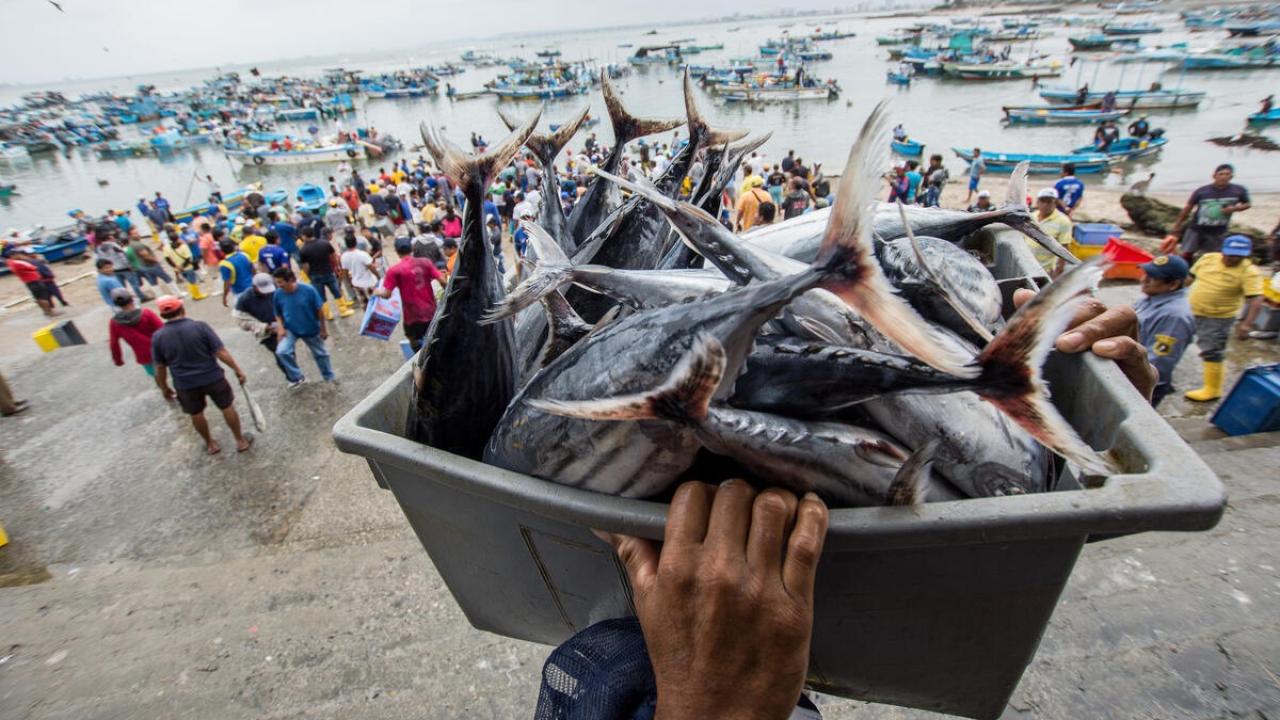
The notable declines estimated in Latin America worsen towards the end of the century in the high emissions scenario, with Ecuador losing 38.9% of its biomass and Peru 37.3%. It also foresees losses for Guatemala, El Salvador, Uruguay, Costa Rica, Nicaragua, Panama and Colombia.
According to a report from the Food and Agriculture Organization of the United Nations (FAO) released this Wednesday, new projections highlight potential climate risks that will affect exploitable fish biomass in almost all regions of the world's oceans. , including major producing countries and those with heavy dependence on aquatic foods.
The report explains that global projections of exploitable fish biomass show decreases of more than 10%, particularly under the high emissions scenario, by mid-century in many regions of the world.
By the end of the century, in the high emissions scenario, which projects global warming of 3 to 4.0 °C, declines worsen to 30% or more in 48 countries and territories.
In contrast, in the low emissions scenario, which projects global warming of 1.5 to 2 °C, changes stabilize between no change and a decrease of 10% or less in 178 countries and territories by the end of the century.
Notable drops include those of the main fish producing countries, which worsen towards the end of the century in the high emissions scenario, for example, 37.3% for the exclusive economic zones of Peru and 30.9% for the economic conditions exclusive to China, but stabilize in the low emissions scenario.
The report was produced by the Ecosystem Model Intercomparison Project (FishMIP), an international network of researchers working with FAO to understand the long-term impacts of climate change on marine ecosystems and fisheries through a set of cutting-edge numerical models.
AMERICAN EFFECTS
Countries and territories in North and South America show wide variation in projected changes in exploitable fishery biomass.
By mid-century, geographic patterns and trends are similar in the low- and high-emissions scenarios, with slightly stronger declines in the high-emissions scenario.
Even by mid-century, declines of more than 10% are projected in some small island states in the region, such as Saint Lucia, Barbados and Dominica. All of them very dependent on fishing.
At the end of the century, geographic patterns remain similar in the low-emissions scenario, but the changes are strongly exacerbated in the high-emissions scenario.
Under conditions of high emissions, losses by 2100 are greater than 20% in the ten most affected countries, including Ecuador and Peru, with losses ranging between 39-37% in extreme scenarios and 19-20% in mild scenarios. It should be noted that Peru contributes almost 6% of the world's capture production of aquatic animals.
Although small increases or no changes are projected in a small set of areas within waters of national jurisdiction, these are associated with high levels of spatial variability that are offset by decreases at the national level.
Furthermore, at the country and territory level, increasing trends and lack of change are accompanied by high variability between models and low levels of confidence in the models.
The United States, now one of the largest producers and importers of aquatic animal products in the world, ranks seventh in terms of projected losses of exploitable fishery biomass by the end of the century, between 29% and 13% under high emissions, the phenomenon could cause a reduction in the supply of fish.
Likewise, sharp falls in exploitable fishing biomass are expected for other countries and territories in Central and South America, such as Guatemala, El Salvador, Uruguay, Costa Rica, Nicaragua, Panama and Colombia.
"This poses additional challenges for Latin America and the Caribbean, where coastal populations are projected to increase by 42 to 48 percent by 2050 relative to 2010 levels, before population growth slows towards the end of the century. ", highlights the report.










